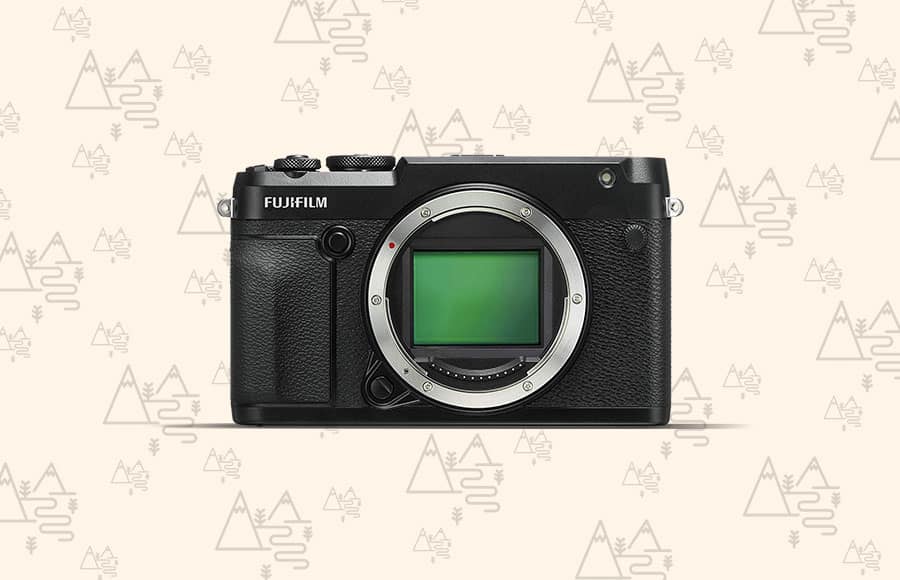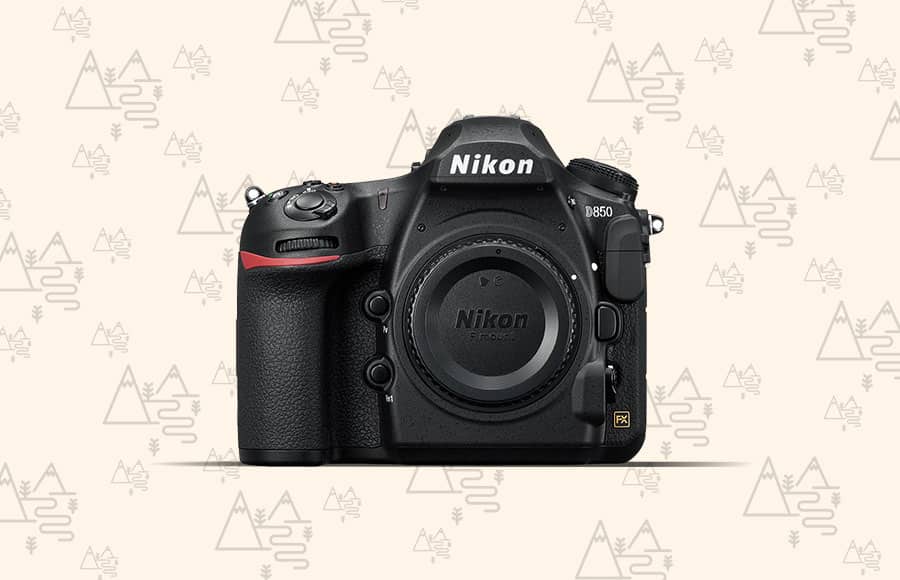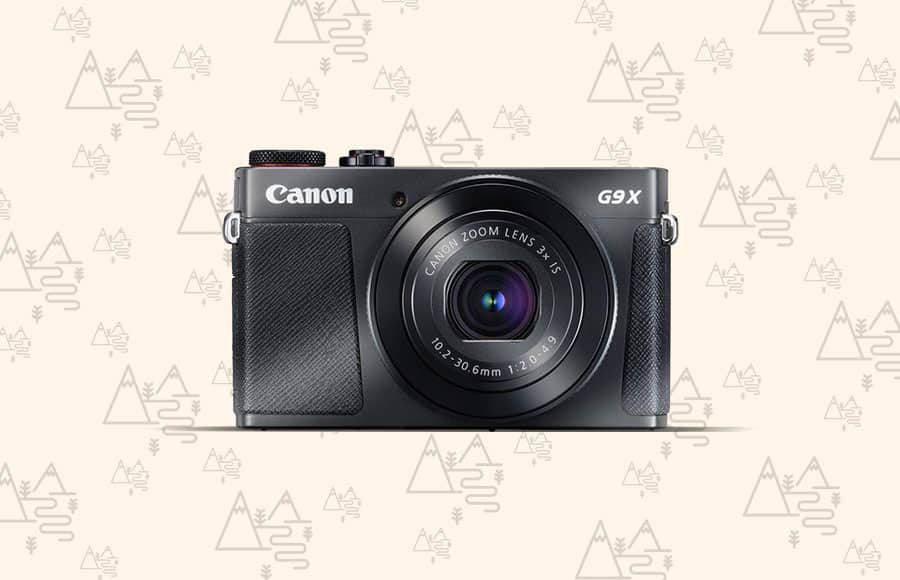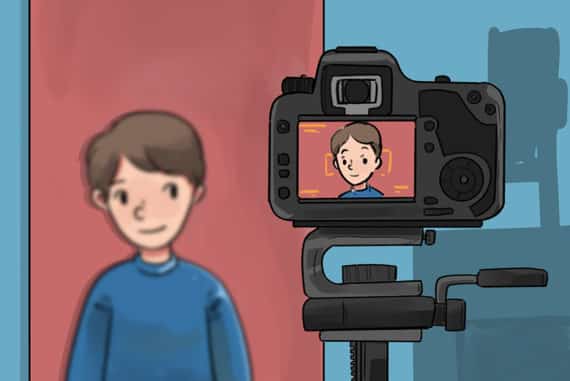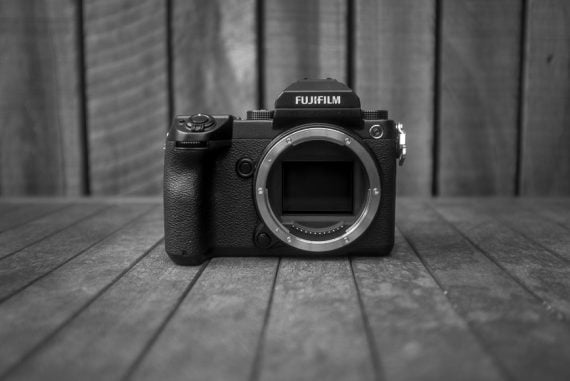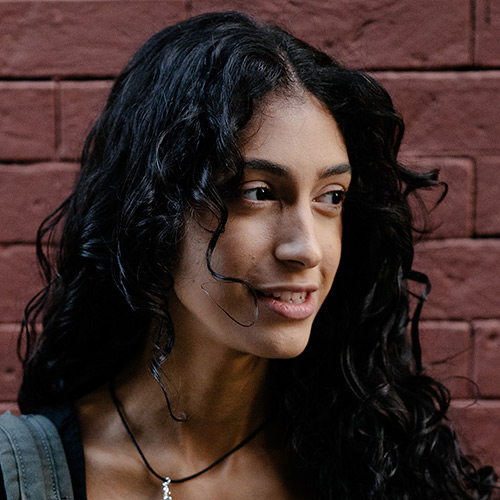
Best Camera for Landscape Photography and Capturing the Great Outdoors
Your search for the best camera for landscape photography can end here! We’ve chosen 5 of the best options. Check it out!
We’ve just finished our search for the best camera for landscape photography here in 2024 – it’s been a fun journey!
When photographing landscapes, every pixel counts – whether you intend to print your images, or simply share them on social media, choosing the right camera to capture the world in all its glory is important.
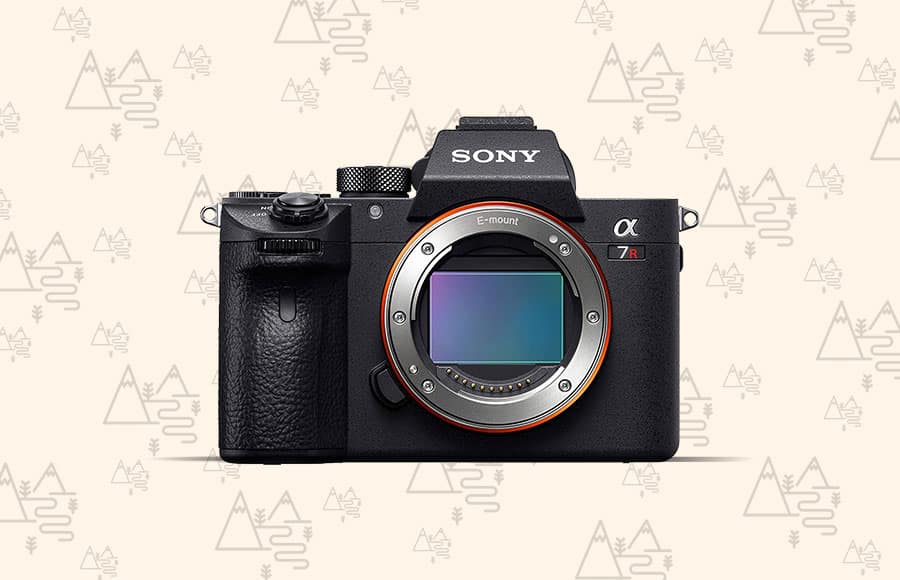
A 15-stop dynamic range and whopping 61 megapixels make this your ticket to jaw-dropping images.
Landscape photography is such a popular pursuit, whether you’re a beginner, hobbyist or professional, and it’s important you invest in the right gear for the job.
Sure, you could probably use any camera for landscape photography. You can even use your smartphone if you like – it doesn’t take a fancy camera to produce a great photo, after all.
However, if you’re keen to make the most of those dramatic vistas, sunsets and waterfalls, take some time to learn more about the cameras recommended by professional landscape photographers in this guide.
You should also read our guide to choosing the best lens for landscape photography.
Best Landscape Cameras in 2024
| Image | Product | Features | |
|---|---|---|---|
 | Sony A7R IVBEST ALLROUND |
| View Price → |
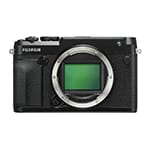 | Fujifilm GFX 50RHIGHLY RECOMMENDED |
| View Price → |
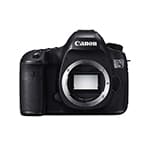 | Canon EOS 5DS RHIGHLY RECOMMENDED |
| View Price → |
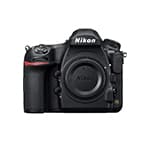 | Nikon D850HIGHLY RECOMMENDED |
| View Price → |
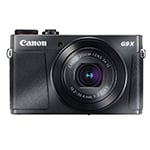 | Canon PowerShot G9 X Mark IIBEST BUDGET |
| View Price → |
1. Sony A7R IV
- Dimensions:129 x 96 x 78 mm (5.1 x 3.8 x 3.1 in)
- Weight: 665 g (23.5 oz)
This is one of the best cameras for landscape photography.
The new Sony A7R IV is a mirrorless camera that packs a whopping 61 MP into its full frame sensor, surpassing the Nikon D850 (45.7) and Canon 5DS R (50.6) below to become the highest-resolution full-frame camera on the market.
If 61 MP isn’t enough, the A7R IV also comes with a Pixel Shift Multi Shooting mode that can churn out images up to 240MP. You’ll need to have your subject completely still for this, but it’s an amazing feature when the scene is right for it.
But you won’t need pixel shift mode to get stunning image quality. The A7R IV is perhaps the only full frame camera that just might be able to match a medium format camera in terms of high-resolution output. The images are just that good. It’s not all about the resolution either. The Sony A7R IV’s newly developed Exmor R CMOS image sensor also comes with a full 15 stops of dynamic range and extraordinary low-light performance.
Speaking of low-light, the Sony A7R IV comes with a wide standard ISO of 100-32000, and even with the increased amount of pixels turns out some surprisingly low-noise images at higher ISOs, with wonderful dynamic range – see why dynamic range is important here.
Out and about without a tripod? No worries! The a7R IV’s 5-axis in-body image-stabilization will let you shoot hand-held up to 5 stops higher than you would otherwise. I’ve been able to get clear, crisp shots handheld even in the fading light of the blue hour!
Snappy autofocus isn’t particularly important in landscape photography – trees and mountains don’t tend to move too fast. Still, if you’re also shooting wildlife the Sony A7R IV’s autofocus is downright amazing, especially with native lenses like the 16-35GM or the 70-200GM. It’s even better than the A7R III, which was no sluggard.
In fact, at 567 autofocus points the Sony A7R IV blows the other high-resolution cameras out of the water. (For comparison, the Nikon D850 has 153 AF points, the Fujifilm GFX 50R 117, and the Canon EOS 5DS R just 61 AF points.) This isn’t a huge deal if you’re into manual focusing or only shoot on a tripod, but if you’re also shooting wildlife the Sony A7R IV works like a dream.
Other improvements over the A7R III include a more rugged build, improved weather sealing (essential for landscape photographers who shoot in adverse weather conditions), and more refined controls. Sony also improved the ergonomics by giving the A7R IV a larger grip and putting the shutter button at an angle.
The full frame viewfinder is now bright, beautiful, and a joy to look into. Like the A7R III, the LCD is large and articulating, making it easy to compose when using a tripod.
The 10fps continuous shooting speed (with 7 seconds buffer) is certainly fast enough for most wildlife photography needs, and the new tracking algorithm is quite impressive. Once the autofocus locks focus onto a subject, it follows it everywhere, even while panning.
Like the other A7s, the battery life of the Sony A7R IV is amazing. Even with a heavy shutter finger, most landscape photographers can go a whole a day or two without having to change batteries.
This is especially true if you tend to use the viewfinder, which, by the way, is 1.6 times higher in resolution than the A7R III.
In the end, though, what you’ll be coming back to is the amazing images and superior amount of detail this camera can capture. The transitions from shadows to mid-tones and from mid-tones to highlights are seamless (i.e. the dynamic range), without any help from ND filters or post-processing.
Sony’s been cranking out top-quality full frame lenses for its mirrorless line consistently over the last few years and now there’s an excellent selection to choose from. There aren’t any tilt-shift lenses in the lineup yet (arguably not all that useful for landscape photographers), but they’re soon to come and for now, you can always use adaptors.
Sure, you might get better image quality with a medium format sensor, but somewhere around $3500, the A7R IV is far less expensive and much more portable. In fact, the Sony A7R IV is actually the smallest and lightest of the interchangeable lens cameras on this list.
On top of all this, the A7R IV is simply fun. It’s easy to use, fast, performs well at just about everything, and has an image quality that will make you want to print billboards left and right from your images. The menu system isn’t the best, but with everything else, this camera has to offer it’s hard to care.
This may be among the best cameras for landscape photography that you’ll find. You’ll probably fall in love with this camera from the moment you open the box, let alone the moment you see your first images. And if you love to make big prints? Just wow!
All in all, the Sony A7R IV is not just our top pick for the best landscape camera of 2024, it’s also an excellent all-around camera that will excel no matter what your subject.
2. Fujifilm GFX 50R
- Dimensions: 160.7 mm x 96.5 mm x 66.4 mm (6.33 x 3.80 x 2.62 in)
- Weight: 775 g (27.3 oz)
If you’re looking for the best quality prints money can buy, you might want to jump up from full frame to a medium format camera. Often costing tens of thousands of dollars, medium formats have long been out of range for most photographers. Now though, there are a few mirrorless camera versions out there, and of these, we think the Fujifilm GFX 50R is the best blend of quality, performance, and price. A formidable contender as the best landscape camera.
The GFX 50R offers 51.4 MP on a full 44 x 33 mm medium-format sensor, all in a housing that’s actually lighter than a standard DSLR full frame camera. That’s somewhat less resolution than the Sony A7R IV, but the sensor size is larger as are the individual pixels, giving the GFX 50R a slight edge in many instances for landscape photographers.
While 44 x 33 mm is still considered a crop sensor in the world of medium format cameras, it’s considerably larger than a full frame sensor (35mm) and that makes a world of difference (beyond pixel size). It’s a completely different shooting experience. It takes some getting used to but once you do, you may never want to go back to anything smaller.
Compared to Fujifilm’s other mirrorless medium formats, the Fujifilm GFX 50R is mostly a slimmed-down version of the Fujifilm GFX 50S. That’s no bad thing, as the 50S is also a solid performer. The GFX 50R is just a lighter, more ergonomic version. The rangefinder style keeps it particularly compact, especially when fitted with a prime lens. It’s also fully weather-sealed and rated to operate down to -10ºC, making it excellent for field use.
As far as price is concerned, the Fujifilm’s GFX 50R triumphs over other the other mirrorless medium formats on the market at the moment. At around $4000, the GFX 50R beats out the Hasselblad X1D II 50C by over $1500. The Fujifilm GFX 50R is simply one of the most affordable medium formats you’ll find.
The first thing you’ll notice about the GFX 50R is how light it feels. At 775g, it’s 50g lighter than its older sibling (the 50S) and 230g lighter than a Nikon D850. (The Sony A7R IV still has it beat at 665g.) Of course, medium format lenses are by necessity a little bulkier than 35 mm lenses, but this is still an impressively portable kit.
Now to the real meat, and why this is the best camera for landscape photography if you have the budget: image quality. Here the Fujifilm GFX 50R is truly hard to beat, at least at this price point. The detail is superb, especially when it comes to surface texture. The images have outstanding sharpness and clarity. Photos taken with this camera are literally just stunning.
Are they better than the Sony A7R IV? That all depends. There are definitely situations where the GFX 50R will produce superior images to the A7R IV. In other situations, the A7R IV works as well for landscapes and sometimes better, especially if you don’t always want to use a tripod to capture your shots.
While the GFX 50R’s 12 stops of dynamic range may not technically seem as impressive as the Sony A7R IV’s 15 stops, the medium format sensor actually gives the GFX 50R a slight edge. There’s an amazing amount of superb detail in the shadows, the transitions to midtones are smooth as butter, and I doubt you’ll ever lose an exposure due to blown-out highlights.
One bonus for long exposure photographers is the ability to dial in manual exposures of up to an hour without the need to switch to Bulb mode. The GFX 50R also meters and focuses extremely accurately in low light and has an EVF that performs exceptionally well.
For those who are fans of using ND filters, the EVF and low light focusing on the GFX 50R are so good, you can often meter, set the exposure, and focus on a subject all without taking off a 10-stop ND filter. The files from long exposures are amazingly clean and noise-free, making this one of the top cameras for long exposure night landscape photography.
If you’re looking for an all-around camera, though, the Fujifilm GFX 50R is probably not it. What it excels at is landscape photography (or photography where the subject is not moving). The autofocus, while extremely accurate, is slow. It also only shoots at 3 fps and has twice as much shutter lag as the Sony A7R IV.
This won’t bother the more methodical photographer or one who prefers manual focus, but if you’re looking for something that is “speedy” you’d be better off with the Sony A7R IV.
Another (potential) disadvantage is that there is currently a rather limited range of native lenses. Still, the essentials are now available and they’re all of excellent quality. Since you’re not looking for snappy autofocus with this camera, third party lenses via adaptors also work great.
One place where the 50R beats out the Sony A7R IV (other than in sensor size) is in the menu system. The Fujifilm GFX 50R’s intuitive, easy-to-use menus make the camera easy to set up, and changing settings is a breeze.
If you’re a fan of manual dials and how Fujifilm cameras feel in the hand, the GFX 50R doesn’t disappoint there either. In fact, a lot of photographers choose the GFX 50R over the Sony A7R IV on ergonomics alone.
In short, the Fujifilm’s GFX 50R is a superb landscape photography camera and one of the best Fuji cameras to date. You won’t find better image quality short of spending tens of thousands of dollars on a Phase One camera or something similar.
Definitely, the most affordable, high performing choice if you’re looking for medium format cameras for landscape photography.
3. Canon EOS 5DS R
- Dimensions: 152.0 x 116.4 x 76.4 mm (5.98 x 4.58 x 3.01 in)
- Weight: 930 g (32.80 oz)
Until the Sony A7R IV came out this year, the Canon EOS 5DS R was the highest resolution full-frame camera on the market. If you weren’t into medium format, this was the camera of choice – especially if you already had Canon lenses
Even now, while the Canon EOS 5DS R’s CMOS full frame sensor has fewer megapixels than the Sony A7R IV (50.6 MP vs 61 MP), the sensor is 21% larger (17.17µm2 vs 14.15µm2 ), evening things out a bit.
If you’re already in the Canon ecosystem and don’t want to upgrade to the EOS R mirrorless camera bodies, the 5DS R is the best camera for landscape photography in 2024.
You’ll love the impressive image quality – more than enough to print billboard-sized images – and the rock-solid durability of Canon’s 5D line really shines.
Like most of the other cameras on this list, the Canon EOS 5DS R is meant for professional landscape photographers who love to make high-quality prints. Bumping up to the EOS 5DS R, you’ll notice your work immediately gaining in clarity and definition. You’ll also see the level of detail nearly jump off the page, with no need to sharpen images in Photoshop after the fact.
To aid in capturing detail, the Canon EOS 5DS R has the option of cancelling out the low-pass filter, allowing every bit of detail to come out. Unlike the Sony A7R IV, if you want to turn the anti-aliasing low-pass filter back on, you can do that too.
Another feature important in landscape photography is the ruggedness of the camera itself. The Canon EOS 5DS R shines here. It might be considerably heavier than its mirrorless competition (930 g to 665 g), but its tough magnesium alloy construction and excellent weather sealing make it pretty much bomb proof in the outdoors.
For a lot of photographers, the solidness of the Canon EOS 5DS R’s grip and the way the camera body feels in the hand makes up for the extra weight. Unlike the Sony A7R IV, it has a top LCD screen. And while the main LCD screen doesn’t articulate like the A7R IV’s, it is somewhat larger, making it easier to see what you’re doing.
The easy-to-use menu system also adds to the beauty of this camera, something that Sony really needs to work on in their cameras.
Perhaps the biggest reason to go with the Canon EOS 5DS R is the wide selection of top-quality lenses for landscape photography. Literally the best in the industry. From the super wide Canon EF 11-24mm f/4L USM to the Canon EF 70-200mm f/2.8L IS II USM, you just can’t go wrong.
Canon also has a number of excellent tilt-shift lenses available.
As far as price is concerned, at around $3700 the Canon EOS 5DS R is a fair competitor with the Sony A7R IV – especially if you already own a number of Canon lenses.
There are some areas where the Canon EOS 5DS R’s age shows, though. The number of autofocus points is way down (only 61 compared to the A7R IV’s 567), the max ISO is only 6400 (ISO range is only a consideration if you plan to shoot in low light), and the continuous shooting speed is only 5fps. There’s also no touchscreen or wifi/bluetooth/NFC connectivity, and battery life leaves a bit to be desired.
Also, the 5DS R is designed primarily for still photography. It doesn’t come with video-centric features like HDMI output or headphone sockets.
These features won’t matter if you’re exclusively a landscape photographer, but if you want to use your camera for other things, they might be deal-breakers.
Still, while the Canon EOS 5DS R may not be particularly brand new, it offers the highest pixel amount currently available on DSLR cameras. The ability to cancel out the low-pass filter effect is a huge boon (the primary distinction from its twin, the 5DS) and its full-frame sensor is substantially larger than what you’ll find in any mirrorless equivalent.
If you’re a landscape photographer and Canon DSLRs are your thing, then this is the best camera for landscape photography.
4. Nikon D850
- Dimensions: 146 x 124 x 78.5 cm (5.8 x 4.9 x 3.1 in.)
- Weight: 915 g (32.3 oz)
Not to be left out, Nikon also has a star performer in the landscape photography world – the Nikon D850. It was released 2 years earlier than the Sony A7R IV but still comes with a number of modern functions like a touch screen and internet connectivity.
Currently retailing for less than $2800, the Nikon D850 (review) sports a 45.7 MP full frame sensor, which is more than enough for top-rate large-scale prints.
If you do an intense amount of low-light shooting and like to max out your ISO, the Sony A7R IV still wins out on the higher end, but for most landscape shooters the Nikon D850’s 64 – 25600 ISO (expands to 32-102400) is more than enough for stellar work. In fact, the base ISO of 64 of the D850’s (and the D810, its predecessor) is the lowest of any DSLR or mirrorless cameras on the market.
Nikon is doing wonderful things with their Z-series mirrorless camera models, but there’s definitely nothing wrong with opting for a DSLR like the Nikon D850 here in 2024. For one, native lens options are far more numerous and affordable.
While not exactly as snappy as the Sony A7R IV, the autofocus of the Nikon D850 is still quite impressive in its speed and more than enough for a general use camera, let alone for landscape photography. (It’s the second-fastest in this list.)
As far as the build is concerned, if you’re already a Nikon shooter, the Nikon D850 will feel like an old friend. The proven Nikon ergonomics feel good in the hand even to new users, and its button layout is both intuitive and comfortable. The buttons are also illuminated, which helps with changing settings when you’re out shooting at dusk or at night.
Other features DSLR users will appreciate is the substantially larger articulating LCD screen and the fact that the Nikon D850 has a top LCD. In fact, the Nikon D850’s LCD screen has a 63% higher resolution than the Sony A7R IV’s.
If you prefer to use the viewfinder, you’ll find the Nikon D850’s beautifully bright and detailed, offering a prime view of the landscape before you. For those who use strong ND filters, Nikon D850 also has a built-in eyepiece shutter for preventing light leakage.
Another feature of note is the Nikon D850’s incredible battery life – 1840 shots compared to the Sony A7R IV’s mere 670 shots. This can make a huge difference when out in the field. It also has excellent weather-sealing.
As far as in-camera features are concerned, the Nikon D850 doesn’t disappoint. It comes with all the features you would expect, plus a 7 fps burst mode, focus bracketing, 4k video recording and an exceptional 8k time-lapse mode.
Another serious plus is the rich selection of high-quality lenses to choose from. There are 304 lenses for Nikon D850’s Nikon F mount to choose from, 101 of which have optical image stabilization. This is helpful since the Nikon D850 doesn’t have its own in-camera stabilization.
Nikon also has a wide array of high-end tilt/shift lenses. So between those and the rest of Nikon’s impressive selection of top-of-the-line glass, you won’t be lacking in options. (If you’re not sure where to start, take a look at our best Nikon lenses for landscape photography page.)
Is the Nikon D850 a better choice for landscape photography than the Sony a7R IV? If you already own a number of full-frame Nikon lenses, absolutely. It’s also a great choice if you’re a pro who uses your camera every day, as the superior optical viewfinder and friendly ergonomics can make all the difference in the world.
The Nikon D850 also offers a higher value for the money. At just under $2800, you get a fantastic landscape camera that will work just as well in the studio. So if you’re price conscious, have already invested in the Nikon ecosystem, and/or you don’t need the A7R IV’s extra features, the Nikon D850 is definitely a worthy choice.
5. Canon PowerShot G9 X Mark II
- Dimensions: 99.06 x 58.42 x 30.48 mm (3.9 x 2.3 x 1.2 in)
- Weight: 206 g (7.3 oz)
No landscape camera list would be complete without something for ultralight hikers and backpackers who want something they can take on the trail. Enter the Canon Powershot G9 X Mark II, the best camera for outdoor photography if you’re on a strict budget.
The Canon Powershot G9 X Mark II is a slim, pocket-size compact camera with a 20-megapixel 1-inch sensor and a 28-84mm equivalent lens. It’s literally the smallest, lightest point-and-shoot with a 1-inch sensor on the market. At just 206 g, the Canon Powershot G9 X Mark II is literally about the size of a pack of cards. To many this combination of features makes this the best camera for outdoor photography.
Honestly, the Canon Powershot G9 X Mark II is so tiny and light, you’ll hardly know it’s there. At the same time, the build feels extremely solid.
Even with its super slim design, the Canon Powershot G9 X Mark II still manages to pack in enthusiast-friendly manual control, a built-in neutral density filter, a surprisingly fast internal processor, in-camera Raw conversion, and reliable autofocus.
Canon does compromise a bit on lens quality in order to get such a tiny profile. Both the equivalent focal range (28-84mm) and its and low-light capabilities are rather limited when compared to those on other pocket cameras, but in return, the G9X II is the slimmest camera of its type. At just 31mm thick you’ll hardly notice it in a shirt or jeans pocket.
While not the widest angle, the 28mm at the wider end of the focal range will still grant ample wide angle coverage for landscapes. The ISO range of 125-12,800, while not excessive, is also decent.
The 1″ sensor is the same as that used in Canon’s more expensive Powershots and performs admirably well. Images come out nice-looking with excellent color and contrast. It also performs reasonably well in low-light situations.
One of the ways Canon kept the Powershot G9 X Mark II so small is by relying almost exclusively on the touchscreen for control. This will be quite familiar for those upgrading from a smartphone.
Other features include the ability to shoot continuously at a speed of 8 fps, respectable subject tracking, image stabilization, and Wi-Fi with NFC and Bluetooth connectivity.
At just under $400, the Canon Powershot G9 X Mark II is a great entry-level compact for casual landscape photographers. The image quality is good and it’s a camera of choice for backpacking trips where space and weight matter.
If you’re wanting something a bit higher class and don’t mind adding a few ounces, I’d recommend stepping up to the PowerShot G7 X II. It’s only about $200 more and you get a much better lens and less of a smartphone feel.
That being said, the price, size and weight of the Canon PowerShot G9X Mark II really can’t be beaten. You could go for a jog and not even feel it in your pocket. It’s our budget camera option for landscape photography in 2024.
Frequently Asked Questions
What camera should I buy for landscape photography?
Our top pick for a camera if you want to shoot landscape photography is the Sony A7R IV. With an impressive 61 MP, 15-stop wide dynamic range, and extraordinary autofocus performance, the A7R IV will help you nail your landscape shots every time.
Is Canon or Nikon better for landscape photography?
Both Canon and Nikon produce great options for landscape photographers, so which one produces the best camera really comes down to your personal preferences and needs. The Canon EOS 5DS R is a great option for those invested or wants to invest in the Canon ecosystem, while our top pick from Nikon would be the Nikon D850 – another star performer when it comes to landscape photography.
How many megapixels do I need for landscape photography?
Few cameras on the market today have less than 16 MP, and even those have a high enough resolution to capture quality images. That said, the higher the megapixels, the better equipped your camera is for producing impressive quality images and large-scale prints. The Sony A7R IV, for example, has a whopping 61-megapixel sensor, making it a top choice for serious landscape photographers.
Are mirrorless cameras good for landscape photography?
Yes – a lot of mirrorless cameras are just as equipped for landscape photography as DSLRs. In fact, they offer advantages such as being smaller and lighter and thus easier to take on travels, hikes and adventures.
What is the best camera for nature photography?
The best camera for nature photography is the Nikon Z9. It offers you the thing you need most when it comes to capturing nature: speed. The Nikon Z9 provides three maximum frame rates, including 20, 30, and 120 FPS.
Is a 20mp enough for landscape photography?
Using a high-quality 20mp camera for landscape photography isn’t a bad idea. However, if you plan on creating large prints, you’ll need to invest in a camera that offers more megapixels.
Final Words
So there you have it – 5 incredible cameras to choose from to take with you on your next outdoor adventure.
Armed with one of the best camera models in this guide and a lens or two, there’s really no excuse for capturing the great outdoors in all its glory.
Remember – whether you own one of these cameras or not, the important thing is that you get out there and start shooting.
Happy snapping!

A 15-stop dynamic range and whopping 61 megapixels make this your ticket to jaw-dropping images.





